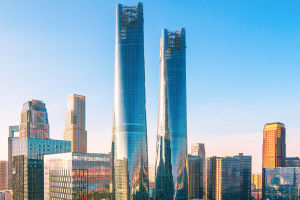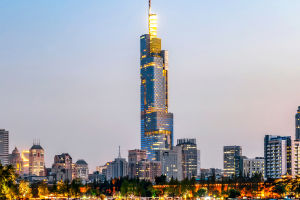Hey Lykkers! Tokyo is known for its incredible skyline, technological innovations, and vibrant city life.
Among its architectural wonders, the Rainbow Bridge stands out as an iconic structure, symbolizing both connectivity and beauty.
Stretching across Tokyo Bay, this impressive suspension bridge connects the central part of the city to the rapidly developing Rinkai subcity area, offering a seamless blend of functionality and aesthetic appeal.
The Engineering Marvel of the Rainbow Bridge
The Rainbow Bridge was completed in 1993, and it remains one of Tokyo's most famous landmarks. Spanning 798 meters (about half a mile) over Tokyo Bay, this suspension bridge is more than just a means of transportation; it's a feat of modern engineering. The bridge's deck is supported by two massive white towers, giving it a sleek, futuristic look. The towers are lit up at night with different colors, reflecting the "rainbow" aspect of its name, making it a breathtaking sight against the Tokyo skyline.
Multi-Use Design
The Rainbow Bridge isn't just for cars. It also supports a double-deck system, allowing for cars on one level and pedestrians and cyclists on another. On the upper level, the Shuto Expressway provides a direct route for vehicles, while the lower deck houses the Yurikamome Line, an automated train system. This design caters to all kinds of commuters, from drivers and cyclists to pedestrians and train passengers.
Environmental Considerations
One remarkable feature of the Rainbow Bridge is its environmental considerations. The lighting system, which gives the bridge its vibrant night-time colors, is solar-powered. Solar panels are installed to capture energy during the day, reducing the bridge's carbon footprint while creating a stunning visual experience for residents and tourists alike.
Tokyo in 8K ULTRA HD - 1st Largest city in the world (60 FPS)
Video by 8K World
Connecting Central Tokyo to Rinkai Subcity
The Rainbow Bridge serves as a vital link between the bustling heart of Tokyo and the ever-expanding Rinkai subcity, an area that has rapidly transformed into a hub for entertainment, shopping, and business.
Rinkai Subcity Development
The Rinkai subcity area, also known as Odaiba, has grown into a key attraction for tourists and locals alike. Once a relatively underdeveloped region, it now boasts shopping malls, entertainment complexes, and even beaches. Popular attractions in the Rinkai area include the futuristic Fuji TV building, the Palette Town shopping complex, and the stunning Odaiba Marine Park.
Seamless Access
With the Rainbow Bridge providing direct access, visitors can easily travel from central Tokyo to Rinkai Subcity. Whether commuting for work or enjoying a leisurely weekend, the bridge allows for convenient travel to the area’s waterfront attractions, high-tech shopping experiences, and family-friendly parks.
Walking the Rainbow Bridge: A Unique Experience
One of the unique aspects of the Rainbow Bridge is that it offers a pedestrian walkway, allowing visitors to cross it on foot and take in breathtaking views of Tokyo Bay, the Tokyo Tower, and the skyscrapers that line the city. The walking paths are on both sides of the bridge, so visitors can enjoy different perspectives depending on their route.
Stunning Views
Walking across the bridge provides unparalleled panoramic views of the Tokyo skyline. On clear days, you can even spot Mount Fuji in the distance, while at night, the illuminated bridge creates a dazzling visual spectacle over Tokyo Bay.
Pedestrian-Friendly Path
The walk is around 1.7 kilometers (about 1 mile) long and takes about 20-30 minutes to complete. With separate lanes for walkers and cyclists, it’s a safe and enjoyable experience for anyone looking to soak in the sights of the city from above the water.
The Rainbow Bridge is more than just a connection between central Tokyo and the Rinkai subcity. It's a testament to the city's forward-thinking design and commitment to functionality, all while maintaining a sense of beauty and elegance. Its iconic presence is a symbol of Tokyo’s constant innovation and its seamless blend of tradition and modernity.


